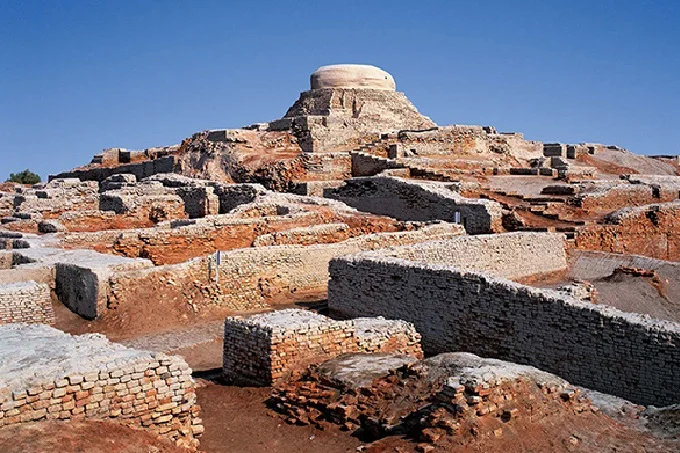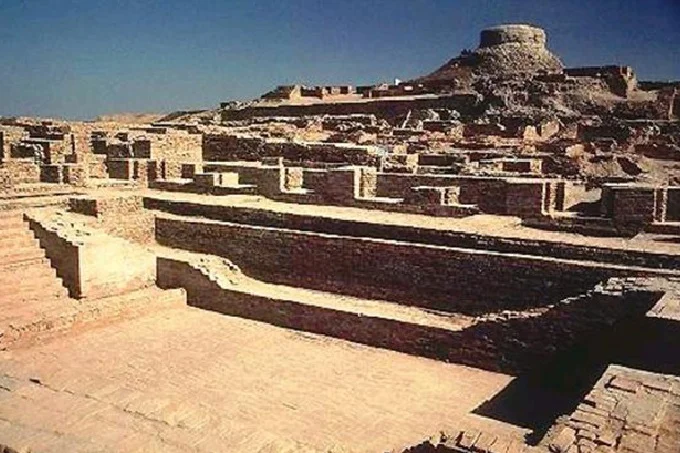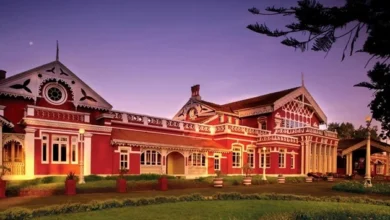Mohenjo-Daro: mysteries of 5000-year-old powerful civilization that existed in Indus Valley

A little over a century ago, back in 1914, a scientist named Rahaldas Banerji went to study the mysterious burial mounds in Pakistan. This place has never been excavated, it was considered cursed. The researcher was sure that it was here that the ruins of a very ancient great city, Mohenjo-Daro, were located. What he eventually discovered was the discovery of the century.
There was a civilization in the Indus Valley that could easily compete with Mesopotamia and Egypt. Only recently have scientists been able to penetrate the mystery of the existence and death of this powerful civilization of antiquity.
Mysterious Civilization
After several years of excavations, interest and intrigue around the mysterious burial mounds have only increased. The ancient city of Harappa in what was then the province of Punjab in British India, and now in Pakistan, was only then discovered. Studies suggested that there was a previously unknown, but incredibly powerful civilization somewhere in these places in ancient times. Banerji enthusiastically began to dig mounds.
His intuition did not fail him. As the archaeological research progressed, he found more and more ancient artifacts. Jewelry of extremely fine workmanship, skillfully painted earthenware, seals depicting mysterious creatures and mysterious inscriptions, beautiful engravings. The study of all these values showed that both in Harappa and here have common roots, although between these cities there is an unthinkable distance of almost 700 kilometers for the ancients!
After that, quite large-scale excavations began. They were led by the Director-General of the Archaeological Survey of India, Sir John Marshall. Soon, scientists were fully rewarded – they discovered a huge ancient city called Mohenjo-Daro. This means “Mound of the Dead” in translation because it was a dead city.

The Mohenjo-Daro was buried and forgotten for millennia. The discovery of Harappa and Mohenjo-Daro was truly the discovery of the century. But this was only the first key to unraveling the mysteries of the existence of the most powerful civilization in the Indus Valley. It was called Harappan, and it arose more than 5000 years ago. The prosperity lasted about 1200 years.
Ancient cities showed an exceptionally high level of not only architectural and engineering thought, but also civil planning and improvement. All buildings were built with fired bricks. All living quarters were equipped to the highest standard. Each had a bathroom and toilet. The sewerage system was well thought out, drains were diverted into special collectors. In the middle of the streets were manholes covered with stone slabs. Drinking water supplies were stored in specially constructed cisterns and wells made of wedge-shaped bricks.
The area of the majestic city of Mohenjo-Daro was located on a territory that was huge by the standards of those times. It was a real ancient metropolis. On the highest hill was the Great Citadel, from where the entire city was visible from end to end.
To the surprise of archaeologists, it was a real bath. Incredibly skillfully built of very carefully fitted brick and gypsum mortar. Inside were locker rooms, a swimming pool, and an elaborate air heating and air conditioning system. All this was carefully opened with bitumen.
Scientists have unearthed more than 40,000 artifacts. All these priceless items helped historians to put together the whole complex mosaic of the life and life of the Mohenjodarans. Artifacts were very diverse. The most famous of them was the bronze statue of a half-naked dancer. Also, a myriad of earthenware jugs and pots of perfect work, toy figurines of animals, and chess pieces were found. In addition to all this, stone weights and measures were found. This speaks of the tax collection and income accounting system that existed there.
The secret of forty-four
Civilization flourished and developed until 1800 BC. After that, everything changed. Cities, for unknown reasons, began to decline. The surrounding villages were abandoned. Trade faded, all evidence of developed writing began to disappear. By 1500 BC, civilization had completely collapsed. Scientists for many years wondered why this happened?
The answer was somewhere nearby. In the late 20s of the 20th century, on the upper levels of Mohenjo-Daro, among residential and public buildings, archaeologists stumbled upon several dozen prostrate skeletons. According to scientists, there were the bodies of 37 men, several children and women. The total number of remains found was 44. All of them lay in strange unnatural positions, which indicated a violent deprivation of life. The experts had several versions. Some said that raiders killed people when they tried to escape from the besieged city. Others have speculated that the bodies were simply dumped there.
After careful research, it turned out that all the bodies were victims of one massacre. Scientists settled on the theory that people were defending this city in its last hours. Historians believe that the nomadic Aryan tribes invaded here from the northwest and destroyed the local civilization.
Only in this theory, there was a snag. There are scattered bodies, but where are the burnt houses, spear and arrowheads, broken armor? Where are the bodies of the invaders after all? Despite all the efforts of archaeologists, nothing was found. No signs of destruction, fire, and bodies of warriors fully armed. In general, there are no signs of any defensive actions by local residents.
Is Massacre at Mohenjo-Daro a myth?
Scientists began a more thorough study of the ruins of the city. In the course of research, they came to the conclusion that the skeletons represent different time periods, some of which reach up to 1000 years. In addition, apart from these 44 bodies, nothing else was found. In other words, there is no evidence of any war or tragedy, mass loss of life. Moreover, not a single cemetery has been found to this day, either in the city itself or in its environs. Perhaps, if one is found, historians will get answers to all their questions. In the meantime, the secret of a powerful ancient civilization has remained a mystery.
The fall of the Mohenjo-Daro Civilization
It is quite possible that the world will never know why this civilization perished and where all the people have gone. Scientists cannot say with certainty, but they focus on a number of indirect factors that can lift the veil of secrecy. The fact is that the Indus River has gradually changed its course over the centuries. These changes led to extremely powerful floods in Mohenjo-Daro. This is evidenced by the massive protective structures around the city’s borders. They seem to be designed specifically for flood protection.

The researchers found evidence of abundant frequent flooding in the form of multiple layers of silty clay on the streets. They suggested that such an environment was ideal for the spread of waterborne diseases. In particular, such as cholera. Of course, it is impossible to prove that the epidemics killed the inhabitants because no burials have been found so far.
Around the same period, Mohenjo-Daro’s main trading partner, Mesopotamia, was also going through huge political upheavals. Together with floods and, possibly, diseases, this could lead to the collapse of trade networks. The latter simply finished off the population of the Indus Valley.
Be that as it may, scientists have not yet solved the “mystery of forty-four”. Many more studies are needed to find the exact answers to all questions about this mysterious ancient civilization. This can be somewhat problematic, as destruction threatens Mohenjo-Daro today like never before. Five thousand years have passed, intense heat, monsoon rains, underground waters are slowly destroying the great ancient city.
In order to protect the city, no matter how trite it sounds, money is needed. The biggest problem is that they are quite considerable. Among other things, the government of Pakistan does not particularly protect such an important historical heritage. For example, in 2014, a festival was allowed to be held here. The fragile ancient ruins were barbarously destroyed with temporary structures. If this continues, then Mohenjo-Daro will disappear without a trace in the next two decades. The city has meanwhile been included in the World Heritage List. The loss will be an irreparable tragedy not only for Pakistan but for all of humanity.
If you are interested in the secrets of antiquity, read our article on why 6 of the most highly developed ancient civilizations collapsed.




